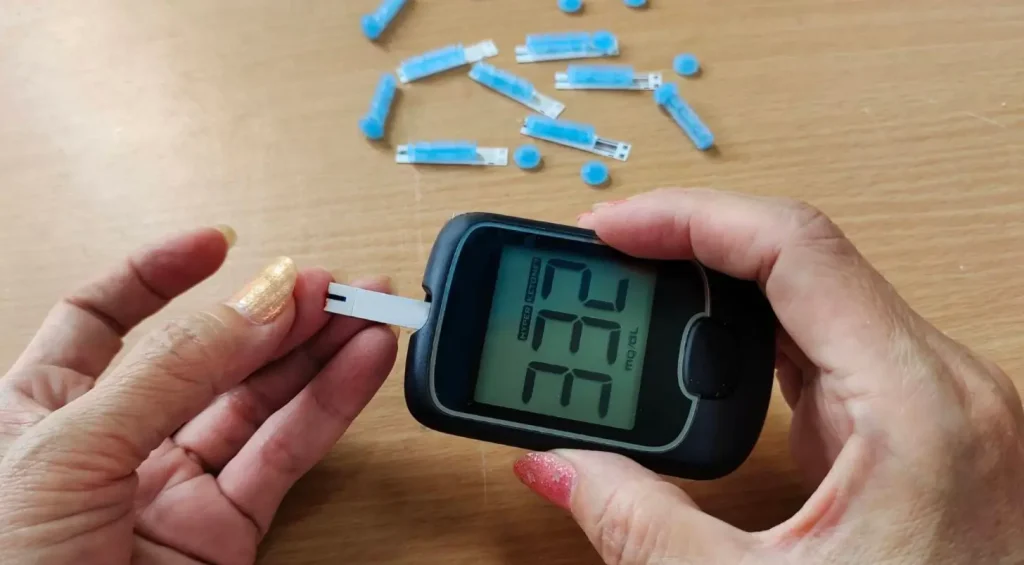With over 536 million adults living with diabetes in 2021, a number set to rise to 783 million by 2045, the need for effective, safe treatments is more pressing than ever. This surge in cases, especially in middle-income countries, highlights the critical importance of therapies that can manage blood sugar and aid in weight loss, without compromising safety.
Mounjaro (tirzepatide), a once-weekly injectable, has emerged as a promising option for those with type 2 diabetes. By targeting both GIP and GLP-1 receptors, it helps lower blood sugar levels and promote weight loss. However, like all medications, Mounjaro comes with its own set of side effects. Some are common, while some are rare but can be more severe.
In this article, we’ll walk you through a complete list of Mounjaro’s side effects, providing valuable insights for both patients and healthcare professionals. Our goal is to equip you with the information needed to make well-informed treatment choices with confidence.
Key Takeaways
- Mounjaro (tirzepatide) is a once-weekly injectable for type 2 diabetes that targets both GIP and GLP-1 receptors to improve blood sugar control and promote weight loss.
- The drug’s mechanism of action can cause common gastrointestinal side effects, such as nausea, vomiting, and diarrhea, especially during dose escalation.
- Serious but rare side effects include pancreatitis, gallbladder disease, and acute kidney injury, emphasizing the importance of regular monitoring and patient education.
- The risk of hypoglycemia increases when Mounjaro is used alongside insulin or sulfonylureas.
- Thyroid C-cell tumors have been noted in animal studies, prompting a boxed warning for patients with a history of medullary thyroid carcinoma (MTC) or MEN 2.
- Patient education and gradual dose titration are essential for improving tolerability and ensuring long-term adherence to treatment.
About: Medical Spa RX provides medical practices with premium products at the best prices. If you’re looking to buy Mounjaro online for your practice, the sales representatives at Medical Spa RX can give you guidance.
Mechanism of Action of Mounjaro and Relevance to Adverse-Effect Profile
Mounjaro (tirzepatide) is a once-weekly injectable for the treatment of type 2 diabetes that activates both GIP and GLP-1 receptors. This dual action helps boost insulin secretion, lower glucagon levels, slow gastric emptying, and increase satiety, all of which contribute to better blood sugar control and gradual weight loss.
Patients often ask, “How long does Mounjaro take to work?“ This is a natural question, as they want to understand how its biological effects translate into real-world results. Having a clear grasp of how Mounjaro works can help set realistic expectations and highlight the systems that may be affected.

While these mechanisms provide the therapeutic benefits of Mounjaro, they also explain its side-effect profile. Slowed gastric emptying may lead to symptoms like nausea, vomiting, or gastroparesis. Additionally, the enhanced insulin release, especially when combined with insulin or sulfonylureas, can increase the risk of hypoglycemia.
Furthermore, preclinical studies have shown thyroid C-cell hyperplasia, which led to a boxed warning about potential thyroid tumors. Understanding these effects helps clinicians anticipate which organ systems may be most affected and allows for better patient monitoring.
Common Gastrointestinal and Injection-Site Reactions with Mounjaro
Mounjaro’s dual activation of GIP and GLP-1 receptors significantly benefits glycemic control and weight loss in type 2 diabetes. However, it can also lead to common side effects, especially affecting the gastrointestinal tract and injection sites. Being aware of these reactions helps clinicians manage patient expectations and promote treatment adherence.
Gastrointestinal Reactions

- Nausea: Typically dose-dependent and most pronounced during the early stages of treatment or with dose escalation.
- Vomiting: Often accompanies nausea, especially with rapid dose increases or if meal timing is poor.
- Diarrhea: Generally mild to moderate, though it can affect hydration and nutrient absorption.
- Constipation: Less common but can occur, particularly in those with slower gastric motility.
- Abdominal discomfort or bloating: This is linked to delayed gastric emptying and altered digestion.
Injection-Site Reactions
- Redness or swelling: These are typically mild and temporary, resolving without the need for intervention.
- Itching or tenderness: Post-injection irritation is possible but can be managed by rotating injection sites.
Metabolic, Cardiovascular, and Endocrine Side Effects: Hypoglycemia, Heart Rate, Thyroid Risk
Mounjaro offers notable benefits for managing blood sugar and aiding weight loss, but its dual action also impacts several key physiological systems, including metabolic, cardiovascular, and endocrine systems. Recognizing the side effects in these areas is essential for safe and effective treatment.
Critical Adverse Effects
- Hypoglycemia: While the risk of hypoglycemia is low when Mounjaro is used alone, it increases when combined with insulin or sulfonylureas.
- Increased Heart Rate: Activation of the GLP-1 receptor may cause a modest increase in heart rate, which requires monitoring, particularly in patients with cardiovascular disease.
- Thyroid C-Cell Tumor Risk: Animal studies have shown an increased incidence of thyroid C-cell tumors, prompting a boxed warning. Mounjaro is contraindicated in individuals with a personal or family history of medullary thyroid carcinoma (MTC) or MEN 2.
Rare but Serious Adverse Events: Pancreatitis, Gallbladder Disease, Acute Kidney Injury, Hypersensitivity
Although rare, Mounjaro has been linked to several serious adverse events that require prompt recognition and medical attention. These risks underscore the importance of patient education and vigilant monitoring throughout treatment.
- Pancreatitis: Acute pancreatitis has been reported with tirzepatide and other GLP-1 receptor agonists. Symptoms include persistent upper abdominal or back pain, nausea, vomiting, and elevated pancreatic enzymes. Immediate medical evaluation is essential if these symptoms occur.
- Gallbladder Disease: Some patients may experience gallstones or gallbladder inflammation. While the incidence is low, it remains a concern for long-term users.
- Acute Kidney Injury (AKI): Severe gastrointestinal reactions, such as vomiting or diarrhea, can lead to dehydration. It reduces kidney perfusion and increases the risk of kidney injury. Though rare, clinicians should carefully monitor renal function, particularly in vulnerable patients.
- Hypersensitivity / Anaphylaxis: Serious allergic reactions—including swelling, difficulty breathing, rash, or throat tightness—require immediate discontinuation of the medication and emergency care.
Tolerability, Patient Education, and Dose-Titration Strategies with Mounjaro
Maximizing tolerability with Mounjaro requires a patient-centered approach. Proper education about expected side effects, safe injection practices, and when to seek medical help helps build trust and confidence in the treatment. Dose-titration is a critical component of treatment. Starting low and gradually increasing the dose reduces adverse effects and improves adherence.
Practical Strategies for Tolerability
- Start with small, frequent meals, focusing on low-fat foods, and stop eating when full to reduce nausea and bloating.
- Stay well-hydrated to prevent complications related to dehydration and kidney function.
- Rotate injection sites regularly to reduce the risk of local irritation.
- Adjust concomitant medications (such as insulin or sulfonylureas) to minimize the risk of hypoglycemia.
- Screen for contraindications such as medullary thyroid carcinoma (MTC), MEN 2, severe gastrointestinal disease, or previous pancreatitis before beginning treatment.
Conclusion
The side-effect profile of Mounjaro (tirzepatide) is significant but manageable with a systematic approach. Gastrointestinal and injection-site reactions are the most common side effects, but these typically decrease over time with proper dosing and support. More critical concerns include hypoglycemia in combination therapies, cardiovascular monitoring, and thyroid tumor risks, which require pre-treatment evaluation and ongoing vigilance.
Rare but serious events like pancreatitis, gallbladder disease, acute kidney injury, and hypersensitivity highlight the importance of patient education and rapid response to warning signs.
With careful patient selection, structured dose titration, and consistent monitoring, Mounjaro can offer a favorable benefit-risk profile within its approved indications.
FAQs
1. What are the most common side effects of Mounjaro?
The most frequent reactions include nausea, vomiting, diarrhea, constipation, and injection-site redness or irritation. These are linked to the drug’s effects on gastrointestinal motility and generally improve over time.
2. Can Mounjaro cause hypoglycemia (low blood sugar)?
Yes, while hypoglycemia is uncommon when used alone, it becomes more likely when combined with insulin or sulfonylureas. Close monitoring and potential adjustments to accompanying medications are important.
3. Does Mounjaro increase the risk of pancreatitis?
There is a risk of acute pancreatitis with tirzepatide-based therapies. Persistent abdominal or back pain, nausea, or vomiting during treatment should prompt immediate evaluation for pancreatitis.
4. Who should avoid taking Mounjaro?
Patients with a personal or family history of medullary thyroid carcinoma (MTC), multiple endocrine neoplasia type 2 (MEN 2), severe gastrointestinal disease (such as gastroparesis), or previous pancreatitis should not take Mounjaro.
5. How do I manage tolerability when starting Mounjaro?
Begin with the lowest dose, increase gradually, eat smaller, more frequent meals, avoid high-fat foods, stay well-hydrated, rotate injection sites, and report any persistent side effects to your healthcare provider.
References
Sun H, Saeedi P, Karuranga S, et al. IDF Diabetes Atlas: Global, regional and country-level diabetes prevalence estimates for 2021 and projections for 2045. Diabetes Research and Clinical Practice. 2021;183:109119. doi:10.1016/j.diabres.2021.109119
Type 2 diabetes – Diagnosis and treatment. Mayo Clinic. https://www.mayoclinic.org/diseases-conditions/type-2-diabetes/diagnosis-treatment/drc-20351199
Tirzepatide injection. Cleveland Clinic. https://my.clevelandclinic.org/health/drugs/23789-tirzepatide-injection


